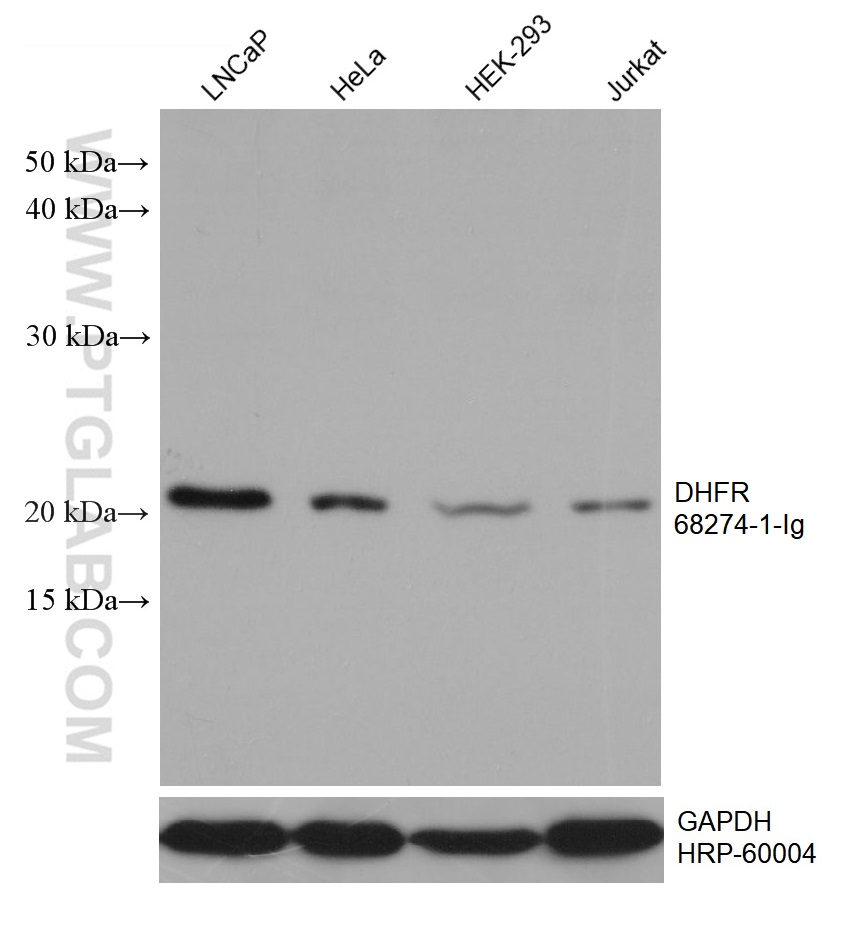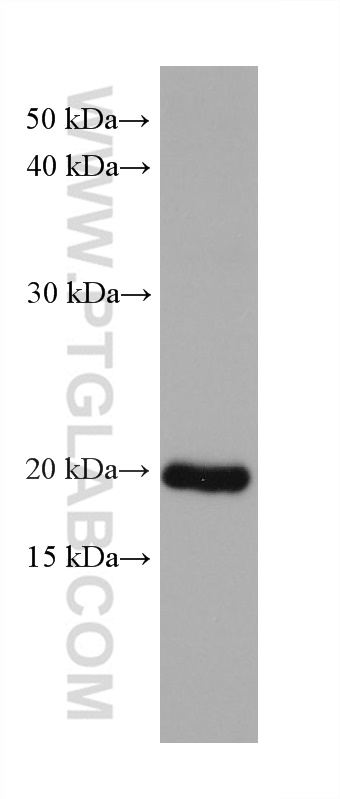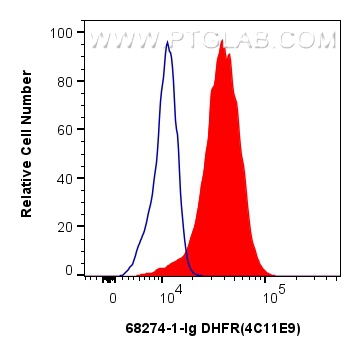验证数据展示
经过测试的应用
| Positive WB detected in | LNCaP cells, NIH/3T3 cells, HeLa cells, HEK-293 cells, Jurkat cells |
| Positive FC (Intra) detected in | MCF-7 cells |
推荐稀释比
| 应用 | 推荐稀释比 |
|---|---|
| Western Blot (WB) | WB : 1:2000-1:10000 |
| Flow Cytometry (FC) (INTRA) | FC (INTRA) : 0.40 ug per 10^6 cells in a 100 µl suspension |
| It is recommended that this reagent should be titrated in each testing system to obtain optimal results. | |
| Sample-dependent, Check data in validation data gallery. | |
产品信息
68274-1-Ig targets DHFR in WB, FC (Intra), ELISA applications and shows reactivity with human, mouse samples.
| 经测试应用 | WB, FC (Intra), ELISA Application Description |
| 经测试反应性 | human, mouse |
| 免疫原 | DHFR fusion protein Ag7318 种属同源性预测 |
| 宿主/亚型 | Mouse / IgG1 |
| 抗体类别 | Monoclonal |
| 产品类型 | Antibody |
| 全称 | dihydrofolate reductase |
| 别名 | EC:1.5.1.3, DHFRP1, 4C11E9 |
| 计算分子量 | 21 kDa |
| 观测分子量 | 21 kDa |
| GenBank蛋白编号 | BC000192 |
| 基因名称 | DHFR |
| Gene ID (NCBI) | 1719 |
| RRID | AB_2935357 |
| 偶联类型 | Unconjugated |
| 形式 | Liquid |
| 纯化方式 | Protein G purification |
| UNIPROT ID | P00374 |
| 储存缓冲液 | PBS with 0.02% sodium azide and 50% glycerol , pH 7.3 |
| 储存条件 | Store at -20°C. Stable for one year after shipment. Aliquoting is unnecessary for -20oC storage. |
背景介绍
DHFR (dihydrofolate reductase) catalyzes the subsequent NADPH-dependent reduction of the H2folate produced by TS to regenerate the tetrahydrofolate (H4folate) necessary for continued dTMP synthesis and transfer of 1-carbon units (PMID:3461439). It belongs to the dihydrofolate reductase family and can exist as a homodimer (PMID:2248959). DHFR is widely expressed in fetal and adult human brain and whole blood, expression is higher in adult brain than fetal brain (PMID:21310276).
实验方案
| Product Specific Protocols | |
|---|---|
| WB protocol for DHFR antibody 68274-1-Ig | Download protocol |
| FC protocol for DHFR antibody 68274-1-Ig | Download protocol |
| Standard Protocols | |
|---|---|
| Click here to view our Standard Protocols |


